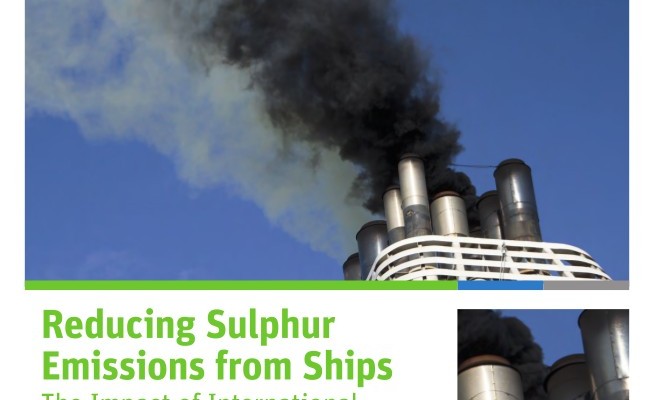Reducing Sulphur Emissions from Ships. The Impact of International Regulation / International Transport Forum
Reducing Sulphur Emissions from Ships. The Impact of International Regulation / International Transport Forum. – Paris : OECD, 2016. – 48 p. [formato PDF, 1,8 MB].
(International Transport Forum Policy Papers : 18).
This study assesses the impact of international sulphur emission reduction regulations on global shipping. Ships emit a large amount of sulphur oxides that have significant health impacts. To mitigate these, international regulations cap the sulphur content of ship fuel. In certain parts of the world, emission control areas (ECAs) with even stricter standards have been established. In the emission control areas, new requirements introduced in 2015 limit the sulphur content of ship fuel to 0.10%. A new, lower global sulphur cap of 0.50% is planned for 2020. This report examines the 2015 cap effects on shipping and the potential effects of the new requirements foreseen for 2020. It assesses the cost increase for maritime transport associated with the sulphur caps, impacts on shipping operations as well as on other transport modes, and on the environment. The report also highlights policy gaps and challenges for the enforcement of sulphur emissions regulation for shipping.
The impact of the sulphur emission requirements introduced in 2015 on global trade flows has been negligible. The resulting total cost increase for a container ship on the Asia-North Europe trade lane ranges between 1.2% and 3.6%. Even for industrial sectors that are very sensitive to maritime transport costs, the cost increases would not exceed 0.5%. Nevertheless, the total increase in container shipping costs due to the 2015 requirements amounts to USD 500 million. For an industry operating on very slight margins this represents significant cost increases, but it remains fairly small compared to the fuel price decrease of 38% over the fourth quarter of 2014.
The sulphur cap of 0.50% planned for 2020 will have a more significant effect on shipping costs. Our calculations show that they could increase between 20% and 85%, depending on the assumptions regarding speed, fuel price and ship size. The relatively large margin is due largely to the uncertainty surrouning the availability of low-sulphur ship fuel. The 2020 requirements could add annual total costs in the order of USD 5 billion to USD 30 billion for the container shipping industry. A postponement of the 0.50% global sulphur cap to 2025 maritime transport costs in 2020 would still increase in the order of 4% to 13%. This is due to the fact that a 0.50% sulphur cap will come into effect in European Union waters from 2020, irrespective of the introduction of the global cap. Such cost increases may have an impact on sectors that are sensitive to changes in shipping costs. In high-cost scenarios the cost increases of the goods value due to the 2020 requirements are 4% for manufactured goods, 9.5% for agricultural goods and 20% for industrial raw materials.
Considering the significant costs to the shipping industry, effective enforcement is of utmost importance to guarantee a level playing field. This would allow compliant companies to avoid incurring considerable additional costs whilst non-compliant operators enjoy an unfair competitive advantage. Effective enforcement would also be needed to achieve the emissions reductions and health benefits that the regulation aims to realise. Numerous enforcement challenges remain unresolved, however. Enforcement of a global sulphur cap at high seas would need to be carried out by flag states. Yet many of these might not be inclined to act accordingly, since their competitive advantage as flag state is based on lenience with regard to enforcing international regulations. Port states would only be able to enforce the leg of the trip in its territorial waters.
